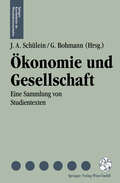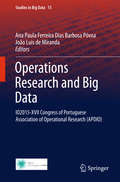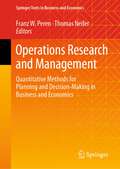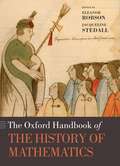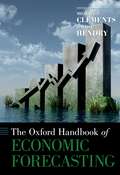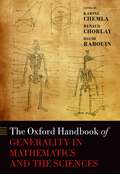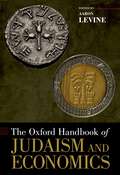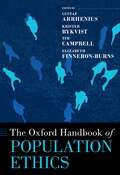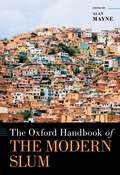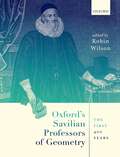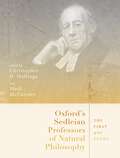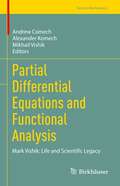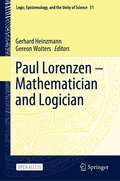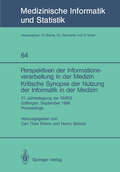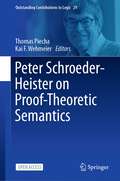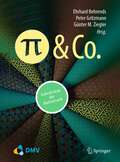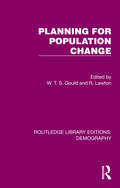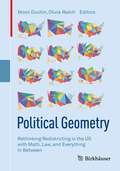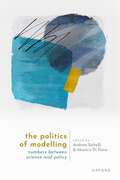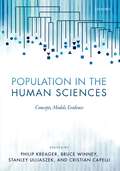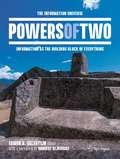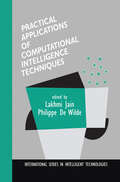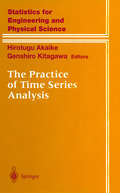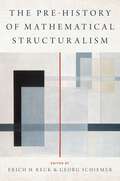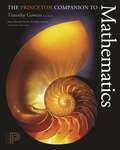- Table View
- List View
Ökonomie und Gesellschaft: Eine Sammlung von Studientexten (Springers Kurzlehrbücher der Wirtschaftswissenschaften)
Was uns - obwohl es Einführungsbücher in die Wirtschaftssoziolo gie in großer Zahl gibt - dazu brachte, einen weiteren Versuch in dieser Richtung zu unternehmen, unterscheidet sich zunächst nicht wesentlich von anderen Unternehmungen dieser Art: da kein Buch alle Ansprüche und Erwartungen erfüllen kann, bleiben alle in irgendeiner Hinsicht unzufriedenstellend (so daß es stets gute Gründe gibt, neue zu verfassen). Für die Darstellungs- und Informationszwecke, für die wir diese Textsammlung unternommen haben, kommt hinzu, daß die meisten Einführungen monografisch angelegt sind, d.h., sie folgen einem bestimmten theoretischen Darstellungsprinzip, nach dem die einzel nen Themen dargestellt und gegliedert werden. Ein solches Ver fahren hat Vor-, aber auch Nachteile. Die Themen müssen sich dem Darstellungsprinzip beugen, oft ist auch der Abgrenzungsbedarf der jeweilig vertretenen Positionen ein Problem. Ein weiteres Problem sahen wir darin, daß die meisten Einfüh rungstexte systematisch angelegt sind und die historische Perspekti ve auf das Thema Wirtschaft kaum oder nur kursorisch behandeln. Wir haben daher in dieser Textsammlung einen anderen Weg beschritten. Zunächst bedeutet eine Textsammlung, daß es keine verbindliche "Linie" gibt, an der die Texte ausgerichtet sind. Wir haben uns statt dessen bemüht, verschiedene (nicht alleO wirtschaftssoziologische Perspektiven zu Wort kommen zu lassen. Damit ist die Vorstellung verbunden, daß es keine Theorie gibt, die allein Gültigkeit beanspruchen kann und alle relevanten Themen bereiche hinreichend erfaßt. Statt dessen halten wir es für sinnvoll, daß diejenigen, die sich mit Wirtschaftssoziologie beschäftigen, mit verschiedenen Perspektiven vertraut gemacht werden.
Operations Research and Big Data: IO2015-XVII Congress of Portuguese Association of Operational Research (APDIO) (Studies in Big Data #15)
The development of Operations Research (OR) requires constant improvements, such as the integration of research results with business applications and innovative educational practice. The full deployment and commercial exploitation of goods and services generally need the construction of strong synergies between educational institutions and businesses. The IO2015 -XVII Congress of APDIO aims at strengthening the knowledge triangle in education, research and innovation, in order to maximize the contribution of OR for sustainable growth, the promoting of a knowledge-based economy, and the smart use of finite resources. The IO2015-XVII Congress of APDIO is a privileged meeting point for the promotion and dissemination of OR and related disciplines, through the exchange of ideas among teachers, researchers, students , and professionals with different background, but all sharing a common desire that is the development of OR.
Operations Research and Management: Quantitative Methods for Planning and Decision-Making in Business and Economics (Springer Texts in Business and Economics)
This textbook introduces quantitative methods in operations management, based on operational research. Written for undergraduate and graduate students as well as practitioners, this book serves as a valuable compendium of essential tools for project planning, control, and strategic decision-making.Drawing from the expertise of both experienced scientists and seasoned practical managers, the descriptions of each tool are a harmonious blend of theoretical insights and real-world applicability. With a focus on accessibility, the authors have thoughtfully combined abstract concepts with easy-to-follow examples and detailed case studies.Readers will benefit from the abundance of well-explained recommendations and practical problem-solving approaches, where the book offers guidance on how to solve presented issues by using commercial software. Whether one seeks to refine project management, optimize operations, or make strategic choices, this book equips readers with the knowledge and proficiency required to excel in the dynamic field of operations management.
OXF HANDB HISTORY MATHEMATICS OHBK C (Oxford Handbooks)
This Handbook explores the history of mathematics under a series of themes which raise new questions about what mathematics has been and what it has meant to practise it. It addresses questions of who creates mathematics, who uses it, and how. A broader understanding of mathematical practitioners naturally leads to a new appreciation of what counts as a historical source. Material and oral evidence is drawn upon as well as an unusual array of textual sources. Further, the ways in which people have chosen to express themselves are as historically meaningful as the contents of the mathematics they have produced. Mathematics is not a fixed and unchanging entity. New questions, contexts, and applications all influence what counts as productive ways of thinking. Because the history of mathematics should interact constructively with other ways of studying the past, the contributors to this book come from a diverse range of intellectual backgrounds in anthropology, archaeology, art history, philosophy, and literature, as well as history of mathematics more traditionally understood. The thirty-six self-contained, multifaceted chapters, each written by a specialist, are arranged under three main headings: 'Geographies and Cultures', 'Peoples and Practices', and 'Interactions and Interpretations'. Together they deal with the mathematics of 5000 years, but without privileging the past three centuries, and an impressive range of periods and places with many points of cross-reference between chapters. The key mathematical cultures of North America, Europe, the Middle East, India, and China are all represented here as well as areas which are not often treated in mainstream history of mathematics, such as Russia, the Balkans, Vietnam, and South America. A vital reference for graduates and researchers in mathematics, historians of science, and general historians.
The Oxford Handbook of Economic Forecasting (Oxford Handbooks)
This Handbook provides up-to-date coverage of both new and well-established fields in the sphere of economic forecasting. The chapters are written by world experts in their respective fields, and provide authoritative yet accessible accounts of the key concepts, subject matter, and techniques in a number of diverse but related areas. It covers the ways in which the availability of ever more plentiful data and computational power have been used in forecasting, in terms of the frequency of observations, the number of variables, and the use of multiple data vintages. Greater data availability has been coupled with developments in statistical theory and economic analysis to allow more elaborate and complicated models to be entertained; the volume provides explanations and critiques of these developments. These include factor models, DSGE models, restricted vector autoregressions, and non-linear models, as well as models for handling data observed at mixed frequencies, high-frequency data, multiple data vintages, methods for forecasting when there are structural breaks, and how breaks might be forecast. Also covered are areas which are less commonly associated with economic forecasting, such as climate change, health economics, long-horizon growth forecasting, and political elections. Econometric forecasting has important contributions to make in these areas along with how their developments inform the mainstream.
The Oxford Handbook of Generality in Mathematics and the Sciences (Oxford Handbooks)
Generality is a key value in scientific discourses and practices. Throughout history, it has received a variety of meanings and of uses. This collection of original essays aims to inquire into this diversity. Through case studies taken from the history of mathematics, physics and the life sciences, the book provides evidence of different ways of understanding the general in various contexts. It aims at showing how collectives have valued generality and how they have worked with specific types of "general" entities, procedures, and arguments. The books connects history and philosophy of mathematics and the sciences at the intersection of two of the most fruitful contemporary lines of research: historical epistemology, in which values (e.g. "objectivity", "accuracy") are studied from a historical viewpoint; and the philosophy of scientific practice, in which conceptual developments are seen as embedded in networks of social, instrumental, and textual practices. Each chapter provides a self-contained case-study, with a clear exposition of the scientific content at stake. The collection covers a wide range of scientific domains - with an emphasis on mathematics - and historical periods. It thus allows a comparative perspective which suggests a non-linear pattern for a history of generality. The introductory chapter spells out the key issues and points to the connections between the chapters.
The Oxford Handbook of Judaism and Economics (Oxford Handbooks)
The interaction of Judaism and economics encompasses many different dimensions. Much of this interaction can be explored through the way in which Jewish law accommodates and even enhances commercial practice today and in past societies. From this context, The Oxford Handbook of Judaism and Economics explores how Judaism as a religion and Jews as a people relate to the economic sphere of life in modern society as well as in the past. Bringing together an astonishingly strong group of top scholars, the volume approaches the subject from a variety of angles, providing one of the most comprehensive, well-rounded, and authoritative accounts of the intersections of Judaism and economics yet produced. Aaron Levine first offers a brief overview of the nature and development of Jewish law as a legal system, then presents essays from a variety of angles and areas of expertise. The book offers contributions on economic theory in the bible and in the Talmud; on the interaction between Jewish law, ethics, modern society, and public policy; then presents illuminating explorations of Judaism throughout economic history and the ways in which economics has influenced Jewish history. The Oxford Handbook of Judaism and Economics at last offers an extensive and welcome resource by leading scholars and economists on the vast and delightfully complex relationship between economics and Judaism.
The Oxford Handbook of Population Ethics (Oxford Handbooks)
The Oxford Handbook of Population Ethics presents up-to-date theoretical analyses of various problems associated with the moral standing of future people and animals in current decision-making. Future people pose an especially hard problem for our current decision-making, since their number and their identities are not fixed but depend on the choices the present generation makes. Do we make the world better by creating more people with good lives? What do we owe future generations in terms of justice? How should burdens and benefits be shared across generations so that justice prevails? These questions are philosophically difficult and important, but also directly relevant to many practical decisions and policies. Climate change policy provides an example, as the increasing global temperature will kill some people and prevent many others from ever existing. Many other policies also influence the size and make-up of future populations both directly and indirectly, for example those concerning family planning, child support, and prioritization in health-care. If we are to adequately assess these policies, we must be able to determine the value of differently sized populations. The essays in this handbook shed light on the value of population change and the nature of our obligations to future generations. It brings together world-leading philosophers to introduce readers to some of the paradoxes of population ethics, challenge some fundamental assumptions that may be taken for granted in the debate about the value of population change, and apply these problems and assumptions to real-world decisions.
The Oxford Handbook of the Modern Slum (OXFORD HANDBOOKS SERIES)
The modern slum is as prevalent as its stereotypes. Today, a slum is often understood to be a place of extreme poverty in the developing world-a place disordered, lacking the basic amenities of life, traumatized by violence, and perpetuated by dysfunctional families and disaffected extremists. Yet the word "slum" was not coined in the twenty-first century's developing world or its recent past. The word emerged in early nineteenth-century London, and its use expanded as modernization created what is now the developed world and its client territories. The Oxford Handbook of the Modern Slum explores the history of the modern slum, connecting nineteenth-century iterations through multiple pathways to its contemporary existence. With chapters by more than twenty scholars, this Handbook brings an array of important and original perspectives and methodologies to bear on slums, real and imagined. Its analysis ranges across Europe, North America, Latin America, South Asia, Southeast Asia, Australia, and sub-Saharan Africa. The Handbook probes the impact of gender and race on urban social disadvantage and traces the development of private and state-sponsored intervention-as well as tourist interest-in urban poverty. It suggests that characterizations of slumland disequilibrium, dysfunctionality, and unsustainability should be offset by evidence of make-do enterprise, strategic determination, resilience, homeliness, and neighborliness. Drawing upon anthropology, archaeology, architecture, geography, history, politics, sociology and urban planning, the Handbook delves into households and communities whose existence has been hidden by stereotypes.
Oxford's Savilian Professors of Geometry: The First 400 Years
The Savilian Professorships in Geometry and Astronomy at Oxford University were founded in 1619 by Sir Henry Savile, distinguished scholar and Warden of Merton College. The Geometry chair, in particular, is the earliest University-based mathematics professorship in England, predating the first Cambridge equivalent by about sixty years. To celebrate the 400th anniversary of the founding of the geometry chair, a meeting was held at the Bodleian Library in Oxford, and the talks presented at this meeting have formed the basis for this fully edited and lavishly illustrated book, which outlines the first 400 years of Oxford's Savilian Professors of Geometry. Starting with Henry Briggs, the co-inventor of logarithms, this volume proceeds via such figures as John Wallis, a founder member of the Royal Society, and Edmond Halley, via the 19th-century figures of Stephen Rigaud, Baden Powell, Henry Smith, and James Joseph Sylvester, to the 20th century and the present day. Oxford's Savilian Professors of Geometry: The First 400 Years assumes no mathematical background, and should therefore appeal to the interested general reader with an interest in mathematics and the sciences. It should also be of interest to anyone interested in the history of mathematics or of the development of Oxford and its namesake university. To all of these audiences it offers portraits of mathematicians at work and an accessible exposition of historical mathematics in the context of its times.
Oxford's Sedleian Professors of Natural Philosophy: The First 400 Years
Established in the early seventeenth century following a bequest to the university by Sir William Sedley, Oxford's Sedleian Professorship of Natural Philosophy is one of the university's oldest professorships. In common with other such positions established around this time, such as the Savilian Professorships of Geometry and Astronomy, for example, its purpose was to provide centrally organised lectures on a specific subject. While the Professorship is now a high-profile research post in applied mathematics, it has previously been held by physicians, an astronomer, and several people in the eighteenth century whose credentials in natural philosophy are much less clear. This edited volume traces the varied history of the chair through the first four centuries of its existence, combining specialised contributions from historians of medicine, of science, of mathematics, and of universities, together with personal reminiscences of some of the more recent holders of the post.
Partial Differential Equations and Functional Analysis: Mark Vishik: Life and Scientific Legacy (Trends in Mathematics)
Mark Vishik was one of the prominent figures in the theory of partial differential equations. His ground-breaking contributions were instrumental in integrating the methods of functional analysis into this theory.The book is based on the memoirs of his friends and students, as well as on the recollections of Mark Vishik himself, and contains a detailed description of his biography: childhood in Lwów, his connections with the famous Lwów school of Stefan Banach, a difficult several year long journey from Lwów to Tbilisi after the Nazi assault in June 1941, going to Moscow and forming his own school of differential equations, whose central role was played by the famous Vishik Seminar at the Department of Mechanics and Mathematics at Moscow State University. The reader is introduced to a number of remarkable scientists whose lives intersected with Vishik’s, including S. Banach, J. Schauder, I. N. Vekua, N. I. Muskhelishvili, L. A. Lyusternik, I. G. Petrovskii, S. L. Sobolev, I. M. Gelfand, M. G. Krein, A. N. Kolmogorov, N. I. Akhiezer, J. Leray, J.-L. Lions, L. Schwartz, L. Nirenberg, and many others.The book also provides a detailed description of the main research directions of Mark Vishik written by his students and colleagues, as well as several reviews of the recent development in these directions.
Paul Lorenzen -- Mathematician and Logician (Logic, Epistemology, and the Unity of Science #51)
This open access book examines the many contributions of Paul Lorenzen, an outstanding philosopher from the latter half of the 20th century. It features papers focused on integrating Lorenzen's original approach into the history of logic and mathematics. The papers also explore how practitioners can implement Lorenzen’s systematical ideas in today’s debates on proof-theoretic semantics, databank management, and stochastics. Coverage details key contributions of Lorenzen to constructive mathematics, Lorenzen’s work on lattice-groups and divisibility theory, and modern set theory and Lorenzen’s critique of actual infinity. The contributors also look at the main problem of Grundlagenforschung and Lorenzen’s consistency proof and Hilbert’s larger program. In addition, the papers offer a constructive examination of a Russell-style Ramified Type Theory and a way out of the circularity puzzle within the operative justification of logic and mathematics. Paul Lorenzen's name is associated with the Erlangen School of Methodical Constructivism, of which the approach in linguistic philosophy and philosophy of science determined philosophical discussions especially in Germany in the 1960s and 1970s. This volume features 10 papers from a meeting that took place at the University of Konstanz.
Perspektiven der Informationsverarbeitung in der Medizin Kritische Synopse der Nutzung der Informatik in der Medizin: 31. Jahrestagung der GMDS Göttingen, September 1986 Proceedings (Medizinische Informatik, Biometrie und Epidemiologie #64)
Eriiffnung Aktuelle Herausforderungen der medizinischen Informationsverarbeitung Selbmann. H. -K. 3 Grundsatzreferate Die Rolle der Epidemiologie fUr die Gesundheitspolitik Suj3muth. R. 9 Organisation des Gehirns und artifizielle Intelligenz Creutzfeldt. O. D. 10 Informatik im Wandel Seegmuller. G. 11 Einfiihrung in die Thematik der Tagung Kritische Synopse der Nutzung der Informatik in der Medizin. - Aus der Sicht der praktischen Erfahrung - Ehlers. C. Th. 17 Perspektiven der Datenverarbeitung in der klinischen Medizin Just. H. 23 Gesundheitsiikonomie und Planung Indikatorensysteme fiir die Krankenhausplanung Eimeren van. W. 29 Das Mikrosimulationssystem des Sonderforschungsbereiches 3: ein Analyseinstrument fiir Ver1lnderungsvorschl1lge der Gesundheitssicherung Brennecke. R. 35 Diagnosebezogene Abrechnungssysteme und ihr EinfluB auf die Struktur der Krankenhauser Kampe. D. M. 40 Budgetierung und Fallkosten-Abrechnung 44 Hildebrand. R. Klinische Diagnosendokumentation Vier Jahrzehnte Dokumentation in der Inneren Medizin. Erwartungen und Erfahrungen 51 Fritze. E. IV Die Nutzung der Basisdokumentation im Medizinischen Infor mationssystem Kiel (MEDIK) Hedderich, J" K, Sauter, K, Carstensen 57 Diagnosenstatistik nach der neuen BPflV und Ausbau zu einer Basisdokumentation Muhs, G. , R. Sawinski, P. Haas, J. R. Mohr 61 Konzeption und Implementierung eines DV -gestiitzten Diagnose erfassungs- und -Auswertungssystems Bulzebruck, H. 65 Auswirkung von Schweregrad der Krankheit und Multimor biditat auf Aufenthaltsdauer und Komplikationsrate Thurmayr, R. 70 Der Hornheider Weg vom Dokumentations- zum Informations system. - Ein struktur- und bedarfsorientierter Weg - Lippold, A. , H. Drepper 74 Offentliches Gesundheitswesen und Epidemiologie Organisatorische und datenschutzrechtliche Gesichts punkte bei der Validierung von Mortalitatsdaten Giersiepen, K. , E.
Peter Schroeder-Heister on Proof-Theoretic Semantics (Outstanding Contributions to Logic #29)
This open access book is a superb collection of some fifteen chapters inspired by Schroeder-Heister's groundbreaking work, written by leading experts in the field, plus an extensive autobiography and comments on the various contributions by Schroeder-Heister himself. For several decades, Peter Schroeder-Heister has been a central figure in proof-theoretic semantics, a field of study situated at the interface of logic, theoretical computer science, natural-language semantics, and the philosophy of language. The chapters of which this book is composed discuss the subject from a rich variety of angles, including the history of logic, the proper interpretation of logical validity, natural deduction rules, the notions of harmony and of synonymy, the structure of proofs, the logical status of equality, intentional phenomena, and the proof theory of second-order arithmetic. All chapters relate directly to questions that have driven Schroeder-Heister's own research agenda and to which he has made seminal contributions. The extensive autobiographical chapter not only provides a fascinating overview of Schroeder-Heister's career and the evolution of his academic interests but also constitutes a contribution to the recent history of logic in its own right, painting an intriguing picture of the philosophical, logical, and mathematical institutional landscape in Germany and elsewhere since the early 1970s. The papers collected in this book are illuminatingly put into a unified perspective by Schroeder-Heister's comments at the end of the book. Both graduate students and established researchers in the field will find this book an excellent resource for future work in proof-theoretic semantics and related areas.
Pi und Co.: Kaleidoskop der Mathematik
Mathematik ist eine vielseitige und lebendige Wissenschaft. Von den großen Themen wie Zahlen, Unendlichkeiten, Dimensionen und Wahrscheinlichkeiten spannen die Autoren einen Bogen zu den aktuellen mathematischen Anwendungen in der Logistik, der Finanzwelt, der Kryptographie, der Medizin und anderen Gebieten. Das Buch versammelt verständliche, unterhaltsame Texte ebenso wie anspruchsvollere mathematische Herausforderungen und bietet damit Lesern die Chance, einen ganz individuellen Zugang zu dieser spannenden Wissenschaft zu finden.
Planning for Population Change (Routledge Library Editions: Demography #6)
Originally published in 1986, this book explores many important aspects of the relationship between population change and planning, exploring the impact of population change on service provision and its impact on the policy-making process. In all countries, whether their population is expanding. ageing or stagnating, population mobility is an important cause of economic and social development. This book argues that there is a need for greater sensitivity about population change in policy-making and service provision and suggests ways of achieving this.
Political Geometry: Rethinking Redistricting in the US with Math, Law, and Everything In Between
“Why does my congressional district look like a salamander?” Politically engaged citizens have been asking this question for far too long. This volume collects perspectives from a wide cross-section of disciplines to explain what drives gerrymandering, why it can be hard to stamp out, and how we might go about fixing it. With topics ranging from the Voting Rights Act to Markov chains to the geography of communities, this book serves as a 21st century toolkit for how we can better approach this corrosive phenomenon.The volume editors gather experts from a variety of fields to provide as many different perspectives on gerrymandering as possible. Thanks to the breadth of expertise found across these chapters, ranging from lawyers to mathematicians to civil rights activists, readers will discover new ways of thinking about redistricting in the United States. Illustrations and helpful walkthroughs appear throughout to clearly explain otherwise complex ideas from these areas. Political Geometry is a must-have for anybody interested in political representation in the United States elections, and for anyone who’s ever thought, “There must be a better way to do this.”
The Politics of Modelling: Numbers Between Science and Policy
Chapter 2, 'Pay no attention to the model behind the curtain', Chapter 4, 'Mind the hubris: Complexity can misfire', and Chapter 8, ' Sensitivity auditing: A practical checklist for auditing decision-relevant models' are published open access and free to read or download from Oxford Academic The widespread use of mathematical models for policy-making and its social and political impact are at the core of this book. While the discussion of mathematical modelling generally centres around technical features, use, and type of model, the literature is increasingly acknowledging that the social nature of modelling, its biases and responsibilities, are equally worth investigating. This book tackles these emerging questions by adopting a multidisciplinary approach to investigate how current modelling practices address contemporary challenges, and fills a gap in the field, which has historically focused on statistical and algorithmic modes of producing numbers. Thanks to its multidisciplinary appeal, this book will be essential reading for modellers, public officials, policymakers, and scholars alike.
Population in the Human Sciences: Concepts, Models, Evidence
The Human Sciences address problems in nature and society that often require coordinated approaches of several scientific disciplines and scholarly research, embracing the social and biological sciences, and history. When we wish, for example, to understand how some sub-populations and not others come to be vulnerable, why a disease spreads in one part of a population and not another, or which gene variants are transmitted across generations, then a remarkable range of disciplinary perspectives need to be brought together, from the study of institutional structures, cultural boundaries, and social networks down to the micro-biology of cellular pathways, and gene expression. The need to explain and address differential impacts of pressing contemporary issues like AIDS, ageing, social and economic inequalities, and environmental change, are well-known cases in point. Population concepts, models, and evidence lie at the core of approaches to all of these problems, if only because accurate differentiation and identification of groups, their structures, constituents, and relations between sub-populations, are necessary to specify their nature and extent. The study of population thus draws both on statistical methodologies of demography and population genetics and sustained observation of the ways in which populations and sub-populations are formed, maintained, or broken up in nature, in the laboratory, and in society. In an era in which research needs to operate on multiple levels, population thinking thus provides a common ground for communication and critical thought across disciplines. Population in the Human Sciences addresses the need for review and assessment of the framework of interdisciplinary population studies. Limitations to prevailing postwar paradigms like the Evolutionary Synthesis and Demographic Transition were becoming evident by the 1970s. Subsequent decades have witnessed an immense expansion of population modelling and related empirical inquiry, with new genetic developments that have reshaped evolutionary, population, and developmental biology. The rise of anthropological and historical demography, and social network analysis, are playing major roles in rethinking modern and earlier population history. More recently, the emergence of sub-disciplines like biodemography and evolutionary anthropology, and growing links between evolutionary and developmental biology, indicate a growing convergence of biological and social approaches to population.
Powers of Two: The Information Universe — Information as the Building Block of Everything
Is everything Information? This is a tantalizing question which emerges in modern physics, life sciences, astronomy and in today’s information and technology-driven society. In Powers of Two expert authors undertake a unique expedition - in words and images - throughout the world (and scales) of information. The story resembles, in a way, the classic Powers of Ten journeys through space: from us to the macro and the micro worlds . However, by following Powers of Two through the world of information, a completely different and timely paradigm unfolds. Every power of two, 1, 2, 4, 8…. tells us a different story: starting from the creation of the very first bit at the Big Bang and the evolution of life, through 50 years of computational science, and finally into deep space, describing the information in black holes and even in the entire universe and beyond…. All this to address one question: Is our universe made of information? In this book, we experience the Information Universe in nature and in our society and how information lies at the very foundation of our understanding of the Universe.From the Foreword by Robbert Dijkgraaf: This book is in many ways a vastly extended version of Shannon’s one-page blueprint. It carries us all the way to the total information content of the Universe. And it bears testimony of how widespread the use of data has become in all aspects of life. Information is the connective tissue of the modern sciences. […] Undoubtedly, future generations will look back at this time, so much enthralled by Big Data and quantum computers, as beholden to the information metaphor. But that is exactly the value of this book. With its crisp descriptions and evocative illustrations, it brings the reader into the here and now, at the very frontier of scientific research, including the excitement and promise of all the outstanding questions and future discoveries.
Practical Applications of Computational Intelligence Techniques (International Series in Intelligent Technologies #16)
Computational intelligence paradigms have attracted the growing interest of researchers, scientists, engineers and application engineers in a number of everyday applications. These applications are not limited to any particular field and include engineering, business, banking and consumer electronics. Computational intelligence paradigms include artificial intelligence, artificial neural networks, fuzzy systems and evolutionary computing. Artificial neural networks can mimic the biological information processing mechanism in a very limited sense. Evolutionary computing algorithms are used for optimisation applications, and fuzzy logic provides a basis for representing uncertain and imprecise knowledge. Practical Applications of Computational Intelligence Techniques contains twelve chapters providing actual application of these techniques in the real world. Such examples include, but are not limited to, intelligent household appliances, aerial spray models, industrial applications and medical diagnostics and practice. This book will be useful to researchers, practicing engineers/scientists and students, who are interested in developing practical applications in a computational intelligence environment.
The Practice of Time Series Analysis (Information Science and Statistics)
A collection of applied papers on time series, appearing here for the first time in English. The applications are primarily found in engineering and the physical sciences.
The Prehistory of Mathematical Structuralism (Logic and Computation in Philosophy)
This is an open access title available under the terms of a CC BY-NC-ND 4.0 licence. It is free to read at Oxford Scholarship Online and offered as a free PDF download from OUP and selected open access locations. Recently, debates about mathematical structuralism have picked up steam again within the philosophy of mathematics, probing ontological and epistemological issues in novel ways. These debates build on discussions of structuralism which began in the 1960s in the work of philosophers such as Paul Benacerraf and Hilary Putnam; going further than these previous thinkers, however, these new debates also recognize that the motivation for structuralist views should be tied to methodological developments within mathematics. In fact, practically all relevant ideas and methods have roots in the structuralist transformation that modern mathematics underwent in the 19th and early 20th centuries. This edited volume of new essays by top scholars in the philosophy of mathematics explores this previously overlooked 'pre-history' of mathematical structuralism. The contributors explore this historical background along two distinct but interconnected dimensions. First, they reconsider the methodological contributions of major figures in the history of mathematics, such as Dedekind, Hilbert, and Bourbaki, who are responsible for the introduction of new number systems, algebras, and geometries that transformed the landscape of mathematics. Second, they reexamine a range of philosophical reflections by mathematically inclined philosophers, like Russell, Cassirer, and Quine, whose work led to profound conclusions about logical, epistemological, and metaphysical aspects of structuralism. Overall, the essays in this volume show not only that the pre-history of mathematical structuralism is much richer than commonly appreciated, but also that it is crucial to take into account this broader intellectual history for enriching current debates in the philosophy of mathematics. The insights included in this volume will interest scholars and students in the philosophy of mathematics, the philosophy of science, and the history of philosophy.
The Princeton Companion to Mathematics
This is a one-of-a-kind reference for anyone with a serious interest in mathematics. Edited by Timothy Gowers, a recipient of the Fields Medal, it presents nearly two hundred entries, written especially for this book by some of the world's leading mathematicians, that introduce basic mathematical tools and vocabulary; trace the development of modern mathematics; explain essential terms and concepts; examine core ideas in major areas of mathematics; describe the achievements of scores of famous mathematicians; explore the impact of mathematics on other disciplines such as biology, finance, and music--and much, much more.Unparalleled in its depth of coverage, The Princeton Companion to Mathematics surveys the most active and exciting branches of pure mathematics. Accessible in style, this is an indispensable resource for undergraduate and graduate students in mathematics as well as for researchers and scholars seeking to understand areas outside their specialties.Features nearly 200 entries, organized thematically and written by an international team of distinguished contributorsPresents major ideas and branches of pure mathematics in a clear, accessible styleDefines and explains important mathematical concepts, methods, theorems, and open problemsIntroduces the language of mathematics and the goals of mathematical researchCovers number theory, algebra, analysis, geometry, logic, probability, and moreTraces the history and development of modern mathematicsProfiles more than ninety-five mathematicians who influenced those working todayExplores the influence of mathematics on other disciplinesIncludes bibliographies, cross-references, and a comprehensive indexContributors incude:Graham Allan, Noga Alon, George Andrews, Tom Archibald, Sir Michael Atiyah, David Aubin, Joan Bagaria, Keith Ball, June Barrow-Green, Alan Beardon, David D. Ben-Zvi, Vitaly Bergelson, Nicholas Bingham, Béla Bollobás, Henk Bos, Bodil Branner, Martin R. Bridson, John P. Burgess, Kevin Buzzard, Peter J. Cameron, Jean-Luc Chabert, Eugenia Cheng, Clifford C. Cocks, Alain Connes, Leo Corry, Wolfgang Coy, Tony Crilly, Serafina Cuomo, Mihalis Dafermos, Partha Dasgupta, Ingrid Daubechies, Joseph W. Dauben, John W. Dawson Jr., Francois de Gandt, Persi Diaconis, Jordan S. Ellenberg, Lawrence C. Evans, Florence Fasanelli, Anita Burdman Feferman, Solomon Feferman, Charles Fefferman, Della Fenster, José Ferreirós, David Fisher, Terry Gannon, A. Gardiner, Charles C. Gillispie, Oded Goldreich, Catherine Goldstein, Fernando Q. Gouvêa, Timothy Gowers, Andrew Granville, Ivor Grattan-Guinness, Jeremy Gray, Ben Green, Ian Grojnowski, Niccolò Guicciardini, Michael Harris, Ulf Hashagen, Nigel Higson, Andrew Hodges, F. E. A. Johnson, Mark Joshi, Kiran S. Kedlaya, Frank Kelly, Sergiu Klainerman, Jon Kleinberg, Israel Kleiner, Jacek Klinowski, Eberhard Knobloch, János Kollár, T. W. Körner, Michael Krivelevich, Peter D. Lax, Imre Leader, Jean-François Le Gall, W. B. R. Lickorish, Martin W. Liebeck, Jesper Lützen, Des MacHale, Alan L. Mackay, Shahn Majid, Lech Maligranda, David Marker, Jean Mawhin, Barry Mazur, Dusa McDuff, Colin McLarty, Bojan Mohar, Peter M. Neumann, Catherine Nolan, James Norris, Brian Osserman, Richard S. Palais, Marco Panza, Karen Hunger Parshall, Gabriel P. Paternain, Jeanne Peiffer, Carl Pomerance, Helmut Pulte, Bruce Reed, Michael C. Reed, Adrian Rice, Eleanor Robson, Igor Rodnianski, John Roe, Mark Ronan, Edward Sandifer, Tilman Sauer, Norbert Schappacher, Andrzej Schinzel, Erhard Scholz, Reinhard Siegmund-Schultze, Gordon Slade, David J. Spiegelhalter, Jacqueline Stedall, Arild Stubhaug, Madhu Sudan, Terence Tao, Jamie Tappenden, C. H. Taubes, Rüdiger Thiele, Burt Totaro, Lloyd N. Trefethen, Dirk van Dalen, Richard Weber, Dominic Welsh, Avi Wigderson, Herbert Wilf, David Wilkins, B. Yandell, Eric Zaslow, Doron Zeilberger
